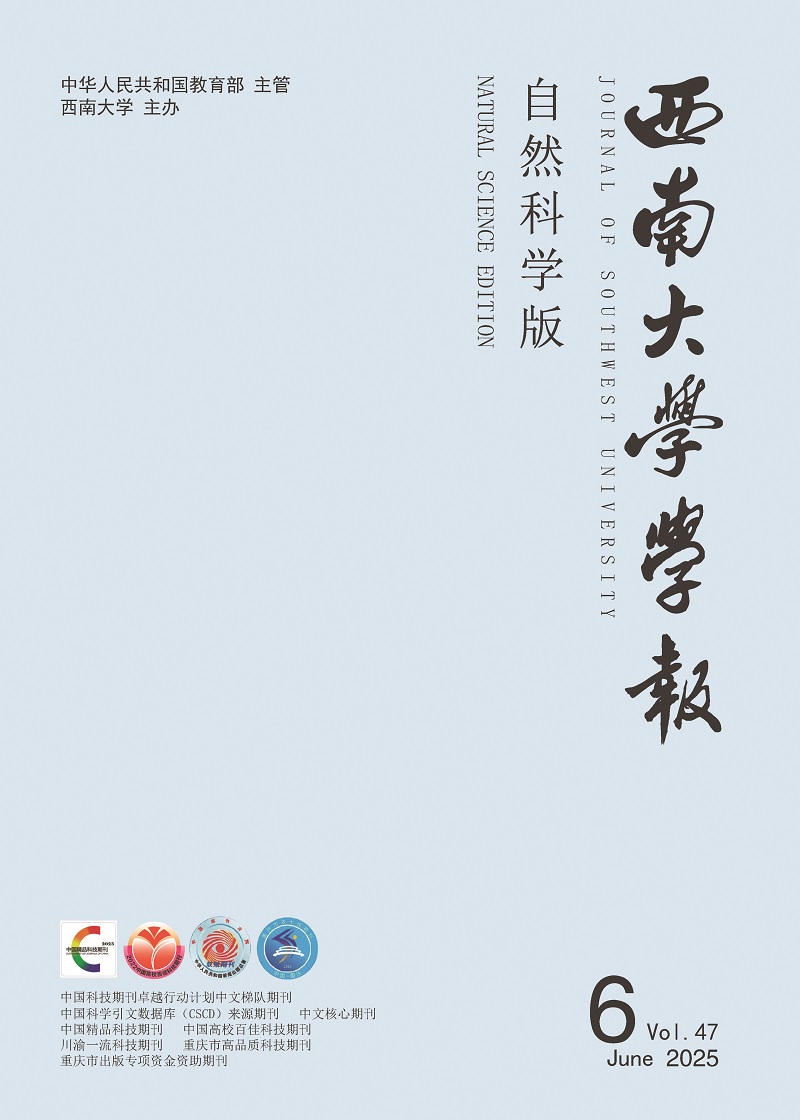-
设X为无限维可分的Banach空间,U,V⊂X为任意非空开集.如果存在n≥0,使得Tn(U)∩V≠∅,则称算子T是拓扑传递的.如果T⊕T是拓扑传递的,则称T是弱混合的.如果存在N≥0,使得对∀n≥N,有Tn(U)∩V≠∅,则称T是混合的.设
$A \subset \mathbb{N}_{+}$ ,如果序列(nk)k⊂A单增,且$\sup\limits_{k \geqslant 1}(n_{k+1}-n_{k} )<\infty$ ,则称A为syndetic集. A为syndetic集等价于$\mathbb{N}_{+} \backslash A$ 中的连续整数区间的长度是有限的.类似地,$M \subset \mathbb{R}_{+}$ 是syndetic集等价于M的补集$\mathbb{R}_{+} \backslash M$ 包含的区间长度是有限的.文献[1]提出了频繁超循环算子这一概念.设$A \subset \mathbb{N}_{+}$ ,A的下密度被定义为:如果存在x∈X(频繁超循环向量),使得dens(N(x,U))>0,则称T为频繁超循环的.关于它的更多研究结果详见文献[2-4].文献[5]首次提出了C0-半群的超循环性.如果X上的算子族(Tt)t≥0满足:T0=I;对∀s,t>0有Tt+s=TsTt;对∀x∈X,t≥0,有
$\lim\limits_{s \rightarrow t} T_{s} x=T_{t} x$ ,则称(Tt)t≥0为C0-半群.如果存在t≥0,使得Tt(U)∩V≠∅,则称(Tt)t≥0是拓扑传递的.如果(Tt⊕Tt)t≥0是拓扑传递的,则称(Tt)t≥0是弱混合的.如果存在t0≥0,使得对∀t≥t0,有Tt(U)∩V≠∅,则称(Tt)t≥0是混合的.文献[6]将频繁超循环性引入到C0-半群.设$M \subset \mathbb{R}_{+}$ 为可测集,M的下密度定义为其中μ为
$\mathbb{R}_{+}$ 上的Lebesgue测度.令(Tt)t≥0为C0-半群,如果存在x∈X(频繁超循环向量),使得dens{R(x,U)}>0,其中$R(x, U)=\left\{t \in \mathbb{R}_{+} : T_{t}(x) \in U\right\}$ ,则称(Tt)t≥0为频繁超循环半群.学者们常常利用偏微分方程的解半群来探索PDE的本质.因此一些特定的PDE的解半群的性质研究得到了更多的青睐[7-8],在生物、物理、化学、工程等领域都有重要的应用[9-11].
HTML
-
文献[12-13]利用回复集刻画了算子的弱混合性.类似地,文献[14-15]证明了C0-半群(Tt)t≥0的弱混合性等价于对任意的非空开集U,V⊂X和0-邻域集W,有R(U,W)∩R(W,V)≠∅,其中R(U,W)={t≥0:Tt(U)∩W≠∅}.本文的定理1将Erdös-Sárközy定理推广到了正实数集合上.
定理1 设
$M \subset \mathbb{R}_{+}$ 有正的下密度,则D=M-M={n-m:n,m∈M,n≥m}是syndetic集.证 若D不是syndetic集,则存在
$\left(n_{k}\right)_{k} \subset \mathbb{R}_{+}$ ,使得对$\forall k \in \mathbb{N} $ 都有$t_{1}+t_{2}+\cdots+t_{k} \in \mathbb{R}_{+} \backslash D$ .因为dens(M)>0,所以对∀m>0,都有令
则
对∀k≤m,存在N≥1,使得
$\mu\left(M_{k} \cap[0, N]\right)>\frac{N+1}{m}$ .设Mj∩Mk=∅(k=1,…,m),从而矛盾.因此,存在j<k,使得Mj∩Mk≠∅,tj+1+…+tk∈D,这与tk的选取矛盾,所以M-M是syndetic集.
利用定理1的结论,我们得到了频繁超循环C0-半群的弱混合性质:
定理2 Fréchet空间X上的频繁超循环C0-半群是弱混合的.
证 设W为0-邻域集,U,V⊂X为非空开集,(Tt)t≥0为X上的频繁超循环C0-半群,则存在非空开集U0⊂U,使得Tt0(U0)⊂W.因为(Tt)t≥0是频繁超循环的,则存在t0≥0,使得Tt0(U)∩W≠∅.设x是频繁超循环向量,则存在
$M \subset \mathbb{R}_{+}$ ,dens(M)>0,使得Tt(x)∈U0(∀t∈M).又对∀t,s∈M,t>s,有Tt0+t-s(Tsx)=Tt0(Ttx)∈W,从而则dens(R(U,W))>0,故R(U,W)是syndetic集.因为(Tt)t≥0为C0-半群,则T-t(W)是0-邻域集,即对∀k≥0,存在0-邻域集W0,使得Tt(W0)⊂W(0≤t≤k).由拓扑传递性知,存在s>k,y∈W0,使得Ts(y)∈V,所以对∀0≤t≤k,有
即对∀k≥0,R(W,V)包含了长度为k的区间,所以R(U,W)∩R(W,V)≠∅,(Tt)t≥0是弱混合的.
-
可分的Fréchet空间上满足频繁超循环准则的算子是拓扑混合的[3],这一结论在C0-半群上也成立.
定理3 设X为可分Fréchet空间,(Tt)t≥0为C0-半群,如果(Tt)t≥0满足频繁超循环准则,即存在X0⊂X,且X0稠密,和一列映射St:X0X(t>0),使得对∀x∈X0,有
(ⅰ) TtStx=x,TtSrx=Sr-tx(r>t>0);
(ⅱ)
$t \longmapsto T_{t} x \mathrm{d} t$ 和$t \longmapsto S_{t} x \mathrm{d} t$ 在[0,+∞)上是Pettis可积的.则对∀x∈X0,当t→+∞时,有Ttx→0,Stx→0.
证 对任意有界线性泛函φ∈X*,∀x∈X0,有φ(Ttx)→0.否则,存在ε0>0和
$\left(t_{n}\right)_{n} \in \mathbb{R}_{+}$ ,使得矛盾.
设X0=(yl)l⊂X稠密且可数,则存在
$\left\{N_{l}\right\}_{l \in \mathbb{N}} \subset \mathbb{N}$ 单增,对∀λ≤l和紧集K⊂[Nl,+∞),有令
则
$\left\|T_{n+1} x-u_{l}\right\|<\frac{4}{2^{l}}$ [16].因(ul)l⊂X的稠密性,则对∀ε>0,Ttx∈X,存在uli,使得‖Ttx-uli‖<ε.从而存在ul1,ul2,当l1,l2充分大时,有故存在N>0,当s,t>N时,有
因此(Ttx)t依范数收敛.由极限的唯一性知Ttx→0(∀x∈X0).
对∀x∈X0,有Srx∈X,X0⊂X稠密,则对∀δ>0,存在xδ∈X0,使得‖Srx-xδ‖<δ.因Tr-t是连续的,故对∀ε0>0,存在δ0(xδ=xδ0),当‖Srx-xδ0‖<δ0时,有‖Tr-t(Srx-xδ0)‖<ε0.易知‖Tr-txδ0‖<ε0,于是
故Stx→0(∀x∈X0).






 DownLoad:
DownLoad: